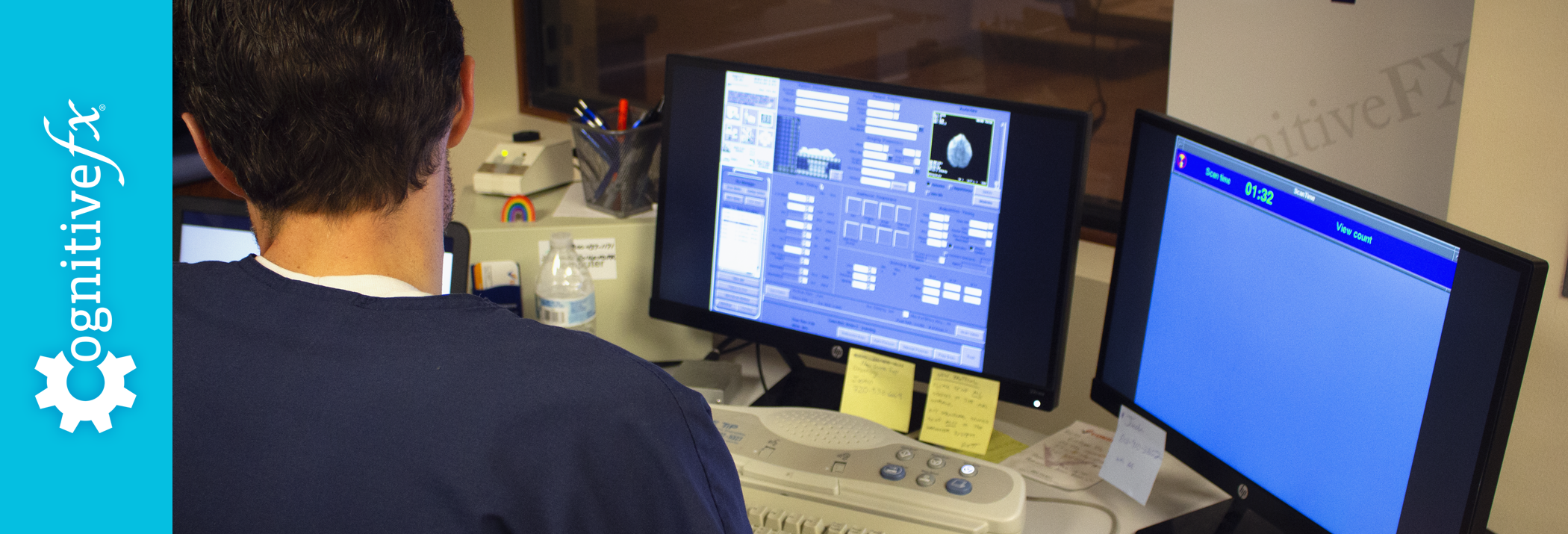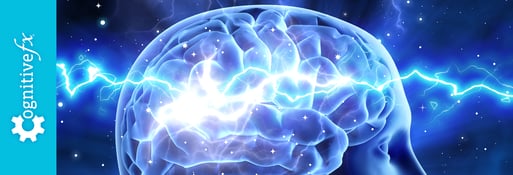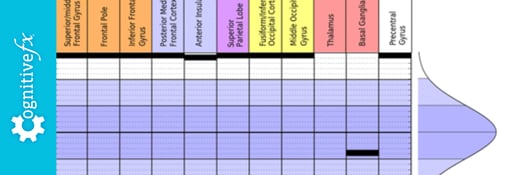Setting & Achieving Goals
Everyone has their own ideas and opinions about goals and goal setting. One of the things that I notice as I work with individuals during EPIC concussion treatment, is that a lot of time it is not...
Published peer-reviewed research shows that Cognitive FX treatment leads to meaningful symptom reduction in post-concussion symptoms for 77% of study participants. Cognitive FX is the only PCS clinic with third-party validated treatment outcomes.
READ FULL STUDY

There are a variety of imaging technologies that can be used to look at a brain injury or a concussion, and are used in unique ways to address and review specific concerns with a head injury. These imaging technologies each have their place and use in addressing and understanding not only a brain injury and concussions but many injuries that may occur throughout our bodies. It is important to know that not all imaging technologies are alike or able to clear detect and diagnose a concussion.
A CT Scan is essentially a 3D X-ray machine. When used to look at the brain, it technically looks at the structure of the brain. When used with contrast, it helps to increase the visibility of the images. A CT scan will send a series of narrow beams throughout the location being scanned to produce more details in the images than a standard x-ray. A CT scan is able to show when an organ has been torn or altered structurally from an injury.
This scan is an advanced form of a CT scan. Using a radioactive substance, it produces 3D images of the area being scanned. This scan can show varying activity levels in the brain. This type of scan can be helpful in seeing what areas are less active, but they do not address functioning abilities where activity is happening.
An MRI scan uses a strong magnetic field and radio waves to create detailed images of organs and tissues within the body. This technology is noninvasive and painless. A standard MRI does not use any ionizing radiation which has the potential to harm an individual. MRI technology gives medical professionals the ability to see a detailed cross sectional image of internal images. This imaging looks at structural injuries. Typically, the patient is laying in a relaxed state of being while getting an MRI.
Using radiation or nuclear medicine imaging, this scan produces 3D images of functional processes within the human body. These types of scans typically address specific conditions and how the condition is developing. As a patient breaks down the radioactive medicine, medical professionals can see how the body is functioning throughout the breakdown process.
The largest difference between a PET scan, CT scan, MRI scan, and a SPECT scan, is that a PET scan can address and understand brain functioning. The other scanning technologies solely look at structural changes or injuries as seen in the other scan types. The downside to this scan is that it is invasive and because of the radioactive medicine it brings along its own set of risks. Because of this, pregnant women cannot be scanned due to radiation risk with the baby.
This form of MRI technology measures brain activity by detecting changes associated with blood flow. We know that blood flow and neuronal activity are coupled together, making it vital to understanding this technology. This technology has the ability to look at functioning in the brain when it comes to neurons and their firing capabilities.
Often times, a patient is at rest in an fMRI scan, and is not participating in cognitive activities. There are some limitations as to who can be scanned because of the powerful magnet. Those who have materials in their body that are magnetic cannot be scanned; i.e. pacemakers, certain types of metal plates, etc.
An adapted form of fMRI technology, this type of scan looks at blood flow and neuronal activation while a patient participates in cognitive tests, similar to those found in a paper pencil test. fNCI detects changes in neural activation while a patient is performing a cognitive test, providing a three dimensional map of brain regions that are used to perform the test.
Because the fNCI scan measures brain function rather than solely giving an image of brain structure, it has the potential to be a very powerful diagnostic and assessment tool. This is especially important for more subtle pathologies, such as mild TBI or mild cognitive impairment, where standard brain imaging rarely detects abnormalities in visible tissue. This gives physicians the ability to look at about 100 distinct brain regions, and look for neuronal biomarkers, or trending levels of dysregulation in the brain.
This scan for concussion, created by Notus Neuropsychological Imaging, is one of the most advanced scans available today. To understand what a normal functioning brain looked like, Notus NI scanned hundreds of individuals over many years. By directly assessing brain activation, clinicians find that fNCI provides more information about brain function in 24 minutes of patient testing than 6-10 hours of traditional neuropsychological testing. Because of this reliability, the fNCI scan is becoming the new gold standard for making important clinical decisions, such as prescribing treatment protocols, assessing treatment outcomes, and determining return-to-play readiness.
Overall, these different imaging technologies are used in hospitals and clinics all around the world to understand the impacts of injury.

The "Cognitive FX Team" is a collaborative ensemble of distinguished doctors, therapists, and practitioners. Our experts are pioneers in the field of neuroimaging and concussion treatment. With extensive experience and a strong commitment to patient care, our team excels in utilizing cutting-edge technologies, such as functional MRI (fMRI), to provide personalized diagnostic and treatment strategies. Our renowned professionals have published groundbreaking research, developed innovative neuroimaging biomarkers, and conducted thousands of individualized patient assessments. We take pride in our holistic approach to patient care, focusing on physical, cognitive, and emotional aspects of recovery. As leaders in the industry, the Cognitive FX Team is dedicated to advancing the science of concussion diagnosis and treatment to provide our patients with the highest level of care and support.

Everyone has their own ideas and opinions about goals and goal setting. One of the things that I notice as I work with individuals during EPIC concussion treatment, is that a lot of time it is not...

As concern about sports concussion has continued to rise over the last few years, there has been some hope that large-scale baseline testing, such as computerized...

Dr. Norman Doidge M.D. is a psychiatrist and a psychoanalyst. He has written many books including New York Times Best Seller, “The Brain that Changes Itself.” He also has written “The Brain’s Way of...

The EPIC Treatment method often brings about a significant amount of brain change in a short period of time, causing new blood flow regulation in your brain that can be drastically different than...

fMRI (functional Magnetic Resonance Imaging) is often a more sensitive method for detecting brain injury such as concussion than a standard MRI (Magnetic Resonance Imaging) brain scan. fNCI...

Self-care is something we all forget about—until we push ourselves too far. We want to give you a new perspective on self-care as you continue to enjoy this summer.
Often, we see or hear that...
Published peer-reviewed research shows that Cognitive FX treatment leads to meaningful symptom reduction in post-concussion symptoms for 77% of study participants. Cognitive FX is the only PCS clinic with third-party validated treatment outcomes.
READ FULL STUDY